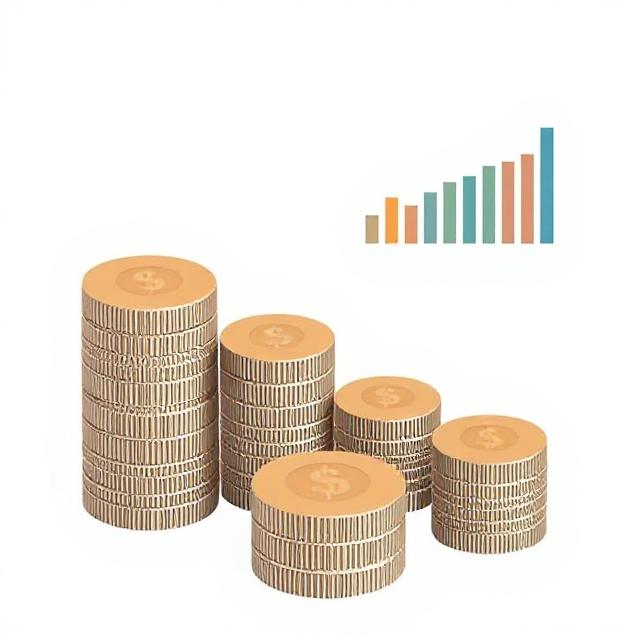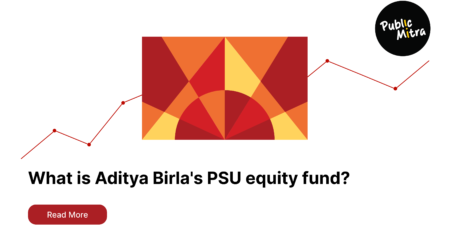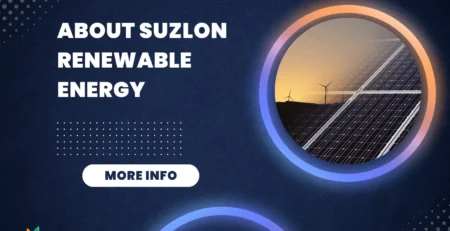Mutual Fund Units Storage Safety: Your Complete Guide to CDSL, NSDL, CAMS & Kfintech Verification
Introduction
Mutual fund investment has become increasingly popular among Indian investors, with millions of people trusting their hard-earned money to professional fund managers. However, many investors remain unaware of the crucial safety mechanisms that protect their investments. Understanding where and how your mutual fund units are stored is essential for every investor’s peace of mind and financial security.
When you invest in mutual funds, your units don’t just disappear into thin air – they are systematically stored and tracked through sophisticated digital infrastructure. This comprehensive guide will explain the dual storage system that safeguards your mutual fund investments, covering both demat and Statement of Account (SOA) modes, and provide you with actionable steps to verify and monitor your holdings.
Understanding Mutual Fund Units Storage: The Foundation of Investment Safety
What Are Mutual Fund Units?
Mutual fund units represent your ownership stake in a particular mutual fund scheme. When you invest ₹10,000 in a mutual fund with a Net Asset Value (NAV) of ₹100, you receive 100 units. These units are digital certificates that prove your investment and entitle you to your proportionate share of the fund’s assets.
The Dual Storage System Explained
India’s mutual fund industry operates on a robust dual storage system designed to ensure maximum safety and transparency. Your mutual fund units are stored through one of two primary methods:
1. Demat Account Storage (CDSL/NSDL) 2. Statement of Account Storage (CAMS/Kfintech)
This dual system ensures that regardless of how you choose to invest, your units are safely stored in regulated, monitored environments with multiple layers of security.
CDSL and NSDL: The Demat Account Guardians
Central Depository Services Limited (CDSL)
CDSL, established in 1999, is one of India’s two central depositories. When you invest in mutual funds through your demat account, CDSL acts as the custodian of your units. The organization maintains detailed records of your holdings, ensuring that every transaction is recorded and can be traced.
Key CDSL Safety Features:
- Real-time transaction recording
- Encrypted data storage
- Regular backup systems
- SEBI oversight and regulation
- Investor grievance redressal mechanism
- Multi-level authentication protocols
National Securities Depository Limited (NSDL)
NSDL, India’s first and largest central depository, provides similar services to CDSL. Established in 1996, NSDL has been instrumental in dematerializing securities and mutual fund units, making them safer and more accessible to investors.
NSDL Security Measures:
- Advanced cybersecurity protocols
- Disaster recovery systems
- Regular system audits
- Compliance with international standards
- Investor protection mechanisms
- Transparent reporting systems
Benefits of Demat Account Storage
Consolidated Portfolio View: All your investments – stocks, bonds, mutual funds – are visible in one place, making portfolio management significantly easier.
Reduced Paperwork: No physical certificates means no risk of loss, theft, or damage to important documents.
Faster Transactions: Buying and selling mutual fund units through demat accounts is quicker and more efficient.
Enhanced Security: Digital storage eliminates risks associated with physical certificates while providing multiple layers of digital security.
CAMS and Kfintech: The SOA Specialists
Computer Age Management Services (CAMS)
CAMS is India’s largest mutual fund transfer agency, serving as the backbone for numerous Asset Management Companies (AMCs). When you invest directly with fund houses or through distributors using the SOA mode, CAMS maintains your unit records.
CAMS Service Excellence:
- Serving over 25 million investors
- Managing more than ₹20 lakh crore in assets
- Processing millions of transactions daily
- Providing comprehensive investor services
- Maintaining detailed transaction histories
- Offering multiple access channels
Kfintech (Karvy Fintech)
Kfintech, formerly known as Karvy, is another major registrar and transfer agent in the mutual fund industry. The company provides similar services to CAMS, ensuring that your mutual fund units are properly recorded and maintained.
Kfintech Capabilities:
- Advanced technology infrastructure
- Comprehensive investor servicing
- Multi-channel access options
- Robust security measures
- Regular compliance monitoring
- Investor education initiatives
Statement of Account (SOA) Advantages
Direct Fund House Relationship: Investing through SOA often means dealing directly with the fund house, potentially resulting in better service and lower costs.
Detailed Reporting: SOA provides comprehensive transaction histories and detailed statements that help in tax planning and financial analysis.
Flexibility: SOA mode often offers more flexibility in terms of investment options and transaction types.
Monthly Verification: Your Safety Net
Why Monthly Verification Matters
Regular verification of your mutual fund holdings is not just a good practice – it’s essential for protecting your investments. Monthly checks help you:
- Identify any unauthorized transactions
- Ensure all your investments are properly recorded
- Track the performance of your portfolio
- Detect any system errors or discrepancies
- Maintain updated records for tax purposes
- Stay informed about your financial health
How to Verify Your Holdings
For Demat Account Investors:
- CDSL Portal Access:
- Visit the CDSL website
- Log in using your credentials
- Navigate to the holdings section
- Verify unit quantities and values
- Check transaction history
- NSDL Portal Navigation:
- Access the NSDL website
- Use your login credentials
- Review your portfolio summary
- Verify recent transactions
- Download statements for records
For SOA Investors:
- CAMS Portal Verification:
- Visit the CAMS investor services portal
- Log in with your credentials
- Check your consolidated account statement
- Verify unit holdings across all schemes
- Review transaction details
- Kfintech Portal Monitoring:
- Access the Kfintech investor portal
- Log in using your account details
- Review your portfolio summary
- Check for any discrepancies
- Download necessary reports
Creating a Monthly Verification Checklist
To ensure thorough verification, create a systematic approach:
Week 1 of Each Month:
- Log into your respective portals
- Download the latest statements
- Compare with your personal records
- Note any discrepancies
Week 2:
- Cross-verify with bank statements
- Check for any unauthorized debits
- Ensure all SIP transactions are recorded
- Review NAV movements
Week 3:
- Compare portfolio performance
- Analyze asset allocation
- Review dividend/growth options
- Check for any corporate actions
Week 4:
- Update personal financial records
- Plan for next month’s investments
- Review and adjust SIP amounts if necessary
- Document any issues for follow-up
Additional Safety Measures and Best Practices
Investment Safety Protocols
1. Secure Login Practices:
- Use strong, unique passwords
- Enable two-factor authentication
- Avoid public Wi-Fi for accessing accounts
- Log out completely after each session
2. Regular Statement Analysis:
- Review monthly statements carefully
- Verify all transaction details
- Check for any unauthorized changes
- Maintain physical/digital copies
3. Communication Monitoring:
- Read all official communications
- Verify any unusual account activities
- Respond promptly to queries
- Update contact information regularly
Regulatory Protection Framework
SEBI Oversight: The Securities and Exchange Board of India (SEBI) provides comprehensive oversight of the mutual fund industry, ensuring that all depositories and registrars maintain the highest standards of safety and transparency.
Investor Protection Fund: Both CDSL and NSDL maintain investor protection funds that provide additional security for investors in case of any system failures or irregularities.
Regular Audits: All depositories and registrars undergo regular audits to ensure compliance with safety standards and regulatory requirements.
Technology and Future of Mutual Fund Storage
Emerging Technologies
Blockchain Integration: The mutual fund industry is gradually adopting blockchain technology to enhance security and transparency in unit storage and transactions.
Artificial Intelligence: AI-powered systems are being implemented to detect unusual patterns and potential security threats, providing an additional layer of protection.
Enhanced Mobile Applications: Mobile apps are becoming increasingly sophisticated, offering investors real-time access to their holdings with enhanced security features.
Future Developments
The mutual fund industry continues to evolve, with new technologies and regulations enhancing investor protection. Expected developments include:
- Enhanced cybersecurity measures
- Improved user interfaces
- Better integration between different systems
- More comprehensive reporting tools
- Advanced fraud detection systems
Conclusion
Your mutual fund units are safe, whether stored through CDSL/NSDL in demat format or through CAMS/Kfintech in SOA format. The dual storage system, combined with robust regulatory oversight and advanced technology, ensures that your investments are protected through multiple layers of security.
However, safety is a shared responsibility. While the infrastructure protects your investments, you must actively participate by conducting monthly verifications, staying informed about your holdings, and following best practices for account security.
Regular monitoring through the respective portals – CDSL, NSDL, CAMS, or Kfintech – is not just recommended but essential for maintaining the safety and integrity of your mutual fund investments. By taking these simple steps each month, you can enjoy the peace of mind that comes with knowing your financial future is secure.
Remember, informed investors are protected investors. Stay vigilant, stay informed, and let the robust infrastructure work in your favor to build long-term wealth through mutual fund investments.
This article is for educational purposes only and should not be considered as investment advice. Always consult with a qualified financial advisor before making investment decisions.












